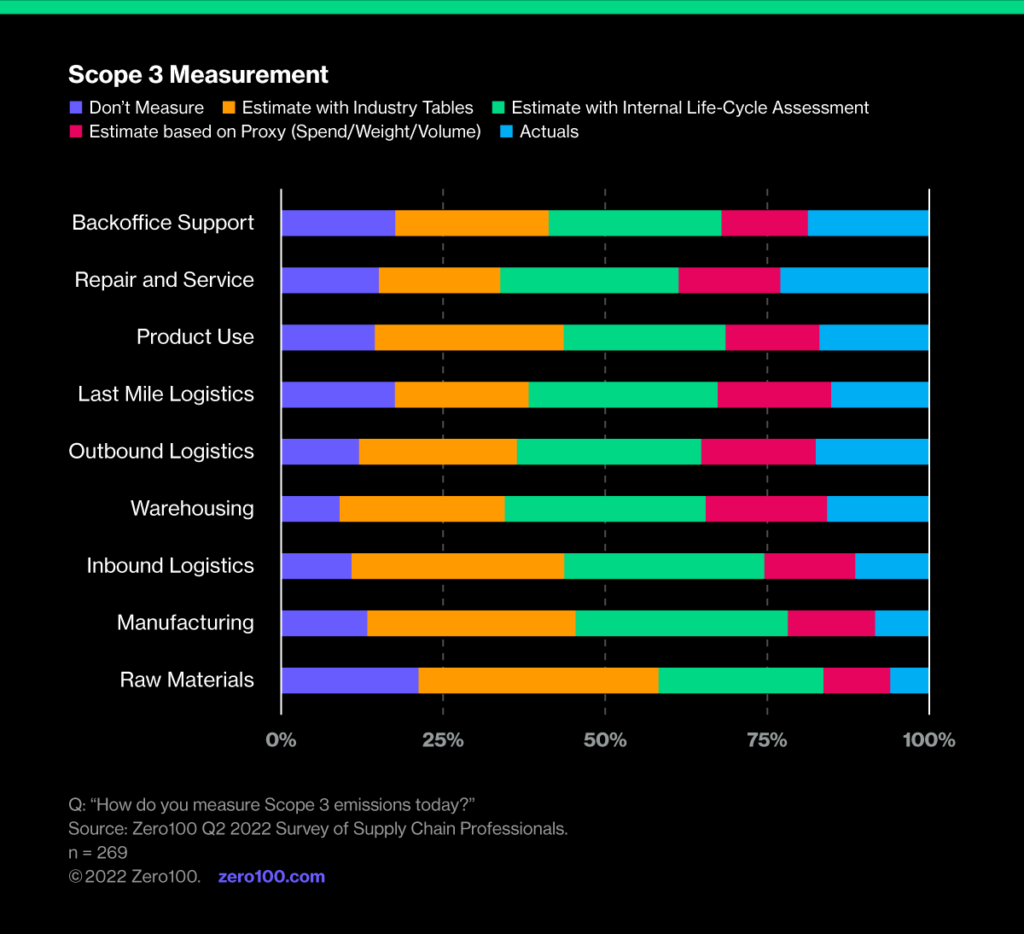
Scope 3 Carbon Victory Needs Sector-Level Collaboration
Science Based Targets Initiative (SBTi) is a widely accepted credentialing body comprising respected NGOs - but the “Sector Guidance” offered by SBTi is still just the beginning. It’s time for supply chain leaders to collaborate at the sector level to nail down the details together.
Science Based Targets Initiative (SBTi) is a widely accepted credentialing body comprising respected and long-established NGOs including the CDP, the United Nations Global Compact, World Resources Institute and the World Wide Fund for Nature. It currently reports 2,279 companies who’ve signed on with science-based targets for greenhouse gas (GHG) reductions, of which 1,680 have made net-zero commitments.
As a sign of intent this is fantastic. Unfortunately, the devil is in the accounting details, and supply chain leaders who typically own 50-90% of Scope 3 carbon, won’t succeed without helping each other within industry groups.
Automotive, apparel, electronics, and chemicals have all come together for such ‘pre-competitive’ collaboration around fair labor, safety, and sustainability, and yet very little progress has been made so far on data definitions, accuracy standards, and allocation rules for GHG emissions from “purchased good and services” upstream in the supply chain.

Birds of a Feather
…flock together, goes the saying. That is exactly what’s needed here. The GHG Protocol which is the backbone and standard for SBTi’s blessing, is comprehensive in its definition of “value chain” including everything from raw material extraction through product use and end of life. And yet, when you get down into the details of each industry’s relationships with the materials, equipment, and energy unique to that industry, there is too much room for interpretation.
The first step most companies take calculating their Scope 3 carbon baseline is to ask suppliers. Seems totally reasonable, but if each company has their own set of questions the suppliers start getting confused. Bigger Tier 1’s will comply as best they can, but what if they don’t know?
In the case of apparel for instance, Tier 1 suppliers sew and finish garments and generally have smaller carbon footprints than Tier 2’s which manufacture fabrics. If supplier questionnaires multiply across even just these two tiers, it’s easy to see how confusion and even fraud could creep into the system.
For CPG companies, “purchased goods and services” include agricultural product, petrochemicals, and metals. Emissions factors for these raw material inputs help simplify the supplier survey challenge, but these tools are too fragmented to be regarded as standards. The GHG Protocol’s Corporate Value Chain (Scope 3) Accounting and Reporting Standard, promises access to “over 80 emission factor databases covering a variety of sectors and geographic regions”.
In electronics, Scope 3 includes nasty stuff like cobalt mining. In aerospace, Scope 3 accountability can easily include 10 supplier tiers. The takeaway is that operational peers in an industry know far more about the practical limits of engaging the supply chain than anyone else. SBTi gets this and offers “Sector Guidance” for nine industries, but this is still nascent, and seems to be driven more by sustainability leaders than supply chain leaders.
Auditing Standards and Scalable Accounting is the Answer
Prestigious NGO’s have been “auditing” companies’ sustainability for decades, but consumers no longer believe it. According to the Edelman Trust Barometer, business is nine percentage points less trusted on climate change than are NGOs, which means 20 years of effort by businesses are falling flat with the public. Greenwashing accusations, and even class action suits are sometimes the reward brands like H&M that stick their neck out to lead.
Trust, like the kind earned over decades by the SEC or FDA, is built not only on transparency, but also on standards for verification via systematic audit. SBTi has been great for Scope 1 and 2 Carbon where accuracy and reporting guidelines are relatively clear, but not for Scope 3 where so much ambiguity persists.
Also, digital technology from machine sensors to ERP systems generate massive data sets that could be used to train AI systems. But these can’t be applied effectively unless GAAP-quality accounting standards normalize the data to drive learning feedback loops targeting carbon reducing operational changes.
Finally, government intervention, like the EU Green Deal means that companies using standard carbon accounting rules are less likely to get into existential regulatory trouble than those with home grown scorecards.
The age of glossy sustainability reports is nearly over. It’s time for supply chain leaders to collaborate at the sector level to nail down the details together.